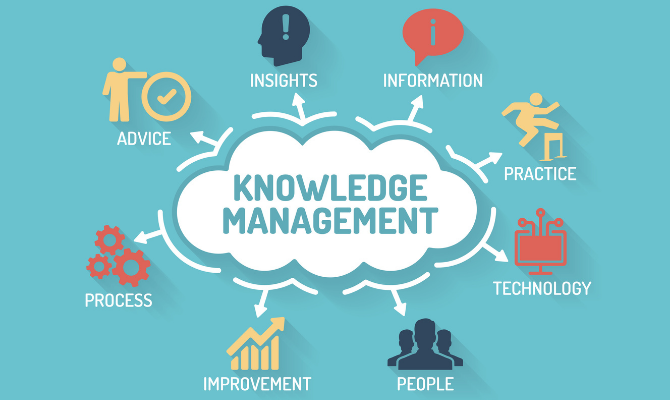If you’re looking to improve your customer support whilst also reducing average handling time and boosting your call centre agents’ morale, integrating a knowledge base into your steps of service is a great place to start.
- What is a knowledge base?
- How to create a knowledge base
- What are the benefits of a knowledge management system?
- Knowledge base best practices
- Knowledge base software and tools
What is a knowledge base?

A knowledge base, also known as a knowledge management system or KMS, is an online library of information about your company’s services or products, containing multiple categories of content with a search bar and menu navigation. Available for your customers to discover and explore, this information can take the form of guides, tutorials and/or articles and focuses on answering your customers’ most common questions and queries.
How to create a knowledge base
Implementing a knowledge base can be hugely beneficial to both your customers and your agents. There are several steps to implementing a successful knowledge management system.
Conduct research
Before you invest in the right knowledge management system for you, you’ll need to understand what purpose the KMS will serve within your business - not just for your team, but for your customers too.
Doing this successfully starts with understanding what exactly your customers need. What are your most frequently asked questions? Are there any particular areas that you need to focus your attention on? Do you have any existing barriers within your current system or team that may hinder the development of an effective and well rounded knowledge base?
Determine your structure
Organisation is absolutely key in the development of a successful knowledge base. You’ll want to make sure that your KMS is as easy for your customer to navigate as possible.
There are several ways you may choose to group the content of your KMS: by product type, user type (full-time, part-time, by department), activity (planning, booking, travelling), or by stages in the customer’s journey (getting started, upgrading, cancelling).
Create your content
Make use of the subject matter experts within your team to create a bank of standardised and well-rounded content that answers your customers’ most frequently asked questions that you discovered during your research. Once your content has been written and edited, you can upload it to your new knowledge management system for your customers to access.
Update your knowledge base regularly
Your KMS won’t be able to do its job properly without the most up-to-date information about your products and services. Make sure to return to your knowledge base and review your content regularly, to ensure that everything your customer and team need to know is readily available.
What are the benefits of a knowledge management system?
Integrating a knowledge base into your business processes has huge benefits for both your customer and your agents.
- A KMS can help to improve team productivity as it presents your agents with all the information they need in a quick and accessible format, so they won’t need to go searching for answers whilst on call with a customer, saving them time and effort.
- Making the answers to your FAQs readily available on your knowledge base is a great way to save your customer time and free up your customer service lines for more difficult calls that require an agent to answer.
- By saving your customers time and effort, you improve the overall customer experience that your business has to offer. By implementing a KMS, you empower your customer to solve their own problem, leaving them satisfied and accomplished.
- By granting your agents access to all the information on your products or services at just the click of a button, you ensure simpler onboarding for new staff.
- A knowledge base can provide your customers with 24/7 customer support, leading to a more satisfactory customer experience.
- A KMS reduces demand on your customer service team and ensures that they have access to all the information they need to do their jobs more efficiently and successfully, leading to happier staff overall.
To find out more about how creating a knowledge base can transform your customer journey, book a discovery call with a member of our team.

7 knowledge base best practices
Personalisation
It’s not always possible to personalise your knowledge base to a single customer, but knowing your target market well and taking the time to understand what the most frequently asked questions your call agents are likely to receive will enable you to cover the majority of your bases successfully using your KMS.
Templatisation
Providing your agents with a template email with which to redirect clients towards your KMS is an efficient and effective way to cut down time and energy costs whilst ensuring that every customer receives the same treatment.
Organisation
Prioritising the organisation of your content within your knowledge management system is essential is maintaining a simple exchange between your business and your customer, whether that exchange takes place through an agent or purely online.
Automation
Your KMS can be a great tool for your automated communication channels such as chatbots on your site. Instead of collecting data to transfer the customer directly to an agent, AI can redirect the customer to the appropriate information on your knowledge base instead, saving your agents time and empowering your customer to solve their problem themselves.
Integration
Once your knowledge management system is up and running, be sure to integrate it with your other channels. Use an omnichannel approach when it comes to customer service so make sure that you’re getting the right advice to the right customer in the most simple way possible.
Referencing
It’s best practice to have a referencing method in place for your knowledge base, so that customers can locate a particular piece of information without having to scour through your entire management system. This helps to streamline their journey through your KMS and in turn improves customer experience and satisfaction.
Feedback
One of the most important things to consider when implementing a knowledge management system into your business is to listen to your staff and your customers. By gathering feedback and making improvements off the back of what your team and customers say, you can ensure that your KMS has all the tailored and specific content that your customers need to access, organised in a way that is efficient and simple for your team to access and relay.
Knowledge base software and knowledge base management tools
Knowledge base software can make or break your customer experience. Investing in the right one for your business is essential in ensuring an easy customer journey and a happy and simple working environment for your call centre agents.
If you’re looking to bring your customer and agent experience together in a way that makes your customer service journey seamless and simple, CXone could be the KMS for you. CXone organises your information to make it easily accessible and understandable for both your customers and your team.
Improve both agent-assisted and self-service customer experiences with an integrated, omni-channel approach. Download our free CXone knowledge management datasheet to discover how CXone can help to bring your customers and agents together.





